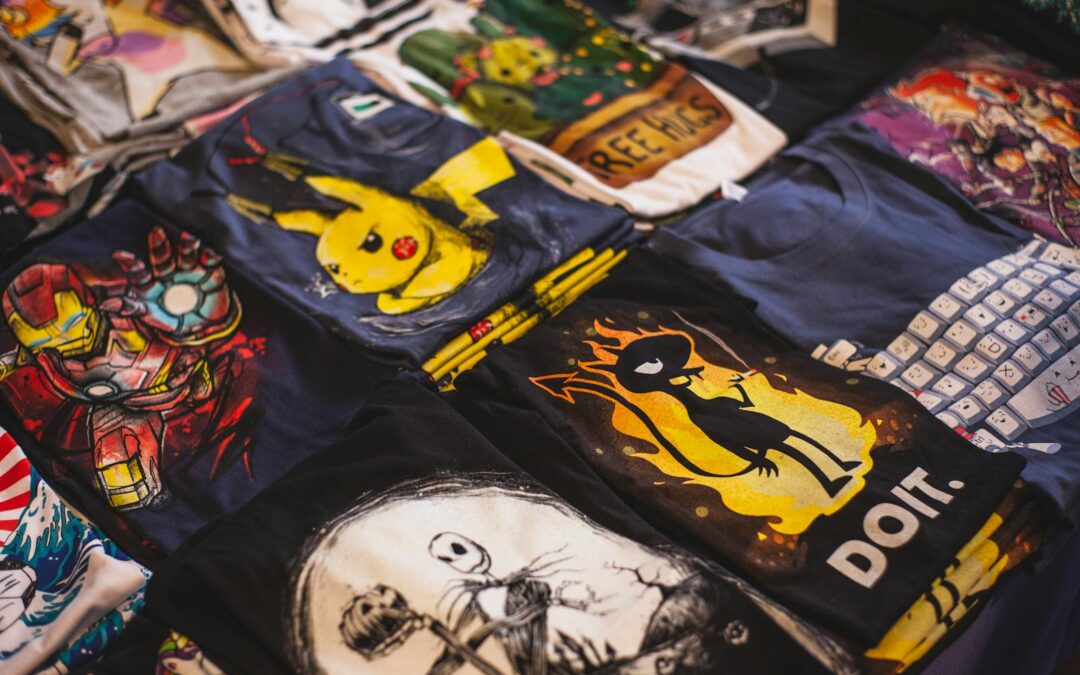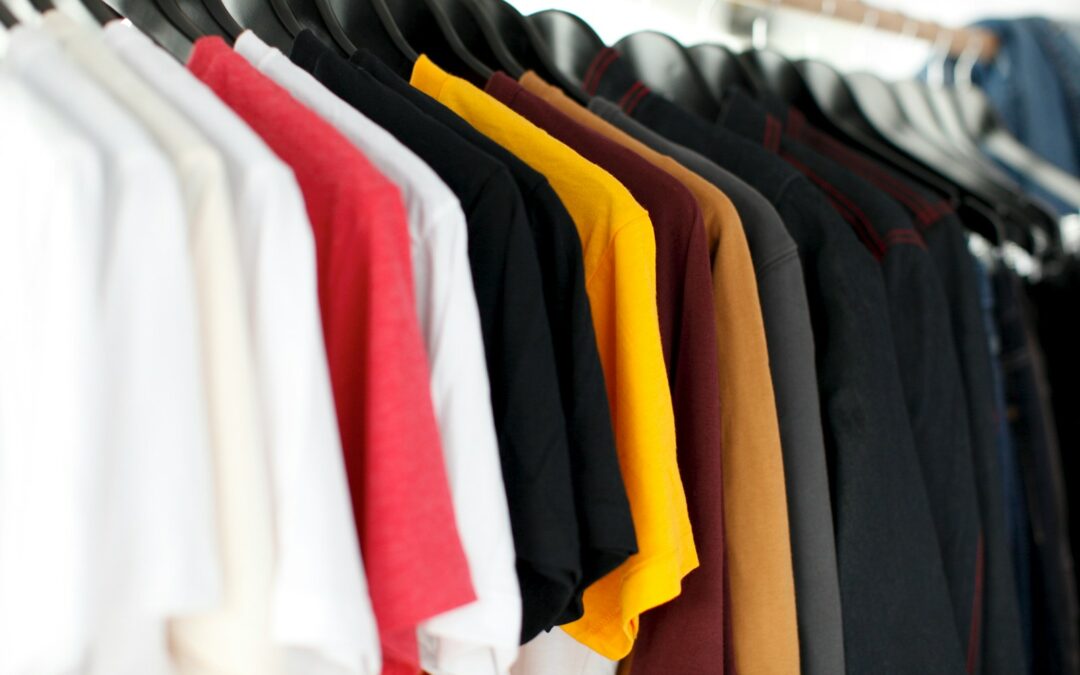Printing custom apparel has never been more accessible or versatile, thanks to innovations in digital printing like Direct-to-Garment (DTG) and Direct-to-Film (DTF) printing. These cutting-edge methods each offer unique benefits, making them favorite choices among custom apparel designers and print-on-demand enthusiasts. But how do you decide which is right for your business or creative needs?
This guide will provide a detailed comparison of DTG and DTF printing—covering their processes, strengths, and limitations, while helping you make an informed choice to heat up your printing game. By the end, you’ll know exactly which method suits your business best!

Introduction to DTG Printing
Direct-to-garment (DTG) printing is a revolutionary technology that has transformed the custom apparel industry. It offers a swift, cost-effective way for ecommerce retailers to produce and sell custom apparel globally. Unlike traditional printing methods, DTG printing is ideal for small orders and one-offs, providing flexibility and efficiency for startups and small businesses. With its cutting-edge innovation, direct to garment DTG printing enhances quality, efficiency, and customization like never before.

What is Direct to Garment Printing?
Direct-to-Garment (DTG) printing, also known as direct to garment printing, uses specialized inkjet technology to print high-quality, full-color designs directly onto fabric, offering significant advantages over traditional screen printing. It’s like using an inkjet printer but for clothes! This process works particularly well for intricate designs or photorealistic images.
How DTG Printing Works
DTG printing works by applying inks directly to t-shirt fabrics using a modified type of inkjet printer that can print water-based inks known as aqueous inks. The DTG printing process involves four steps: prepare digital art files, pretreat and cure the t-shirt, print on the t-shirt, and cure the ink. The pretreatment process helps the ink adhere better to the garment and prevents it from washing off. The curing process involves drying the ink to prevent it from fading or washing off. This meticulous process ensures that DTG printing works efficiently to produce vibrant, long-lasting prints.
Advantages of DTG: Specialized Inkjet Technology
- High-Quality, Detailed Prints – DTG is unmatched for printing intricate designs, gradients, and vivid images. The fine detail it achieves makes it perfect for unique, custom pieces. Additionally, a DTG print offers superior durability and a lower environmental impact compared to screen printing, as it uses water-based inks for sharper images and more color variety.
- Soft Hand Feel – The water-based inks used in DTG soak into the fabric, resulting in prints that feel soft to the touch compared to traditional printing methods.
- Ideal for Small Orders – With no setup fees or minimum order requirements, DTG is perfect for on-demand printing or small custom runs.
Disadvantages of DTG
- Limited Fabric Compatibility – DTG performs best on natural fibers like cotton, making it less suitable for fabrics like polyester or blends.
- Pretreatment Process – Dark garments require a pretreatment solution, which is applied and then heat pressed into the fabric. This additional step helps the fibers to settle and allows the water-based inks to bond effectively, particularly when printing with white ink on dark fabrics.
- Slower Production – Each garment is printed one at a time, making DTG less scalable for bulk orders.
Best Suited For
DTG is great for small businesses, artists, or individuals creating one-of-a-kind pieces with detailed designs.
What is DTF Printing?
Direct-to-Film (DTF) printing involves printing designs onto a special film, which is then transferred to fabric using a heat press. This versatile process works with a wide range of fabrics and garments, achieving vibrant and durable results.
Advantages of DTF
- Fits Any Fabric Type – Unlike DTG, DTF works seamlessly on cotton, polyester, blends, nylon, leather, and even non-traditional materials like wood or canvas.
- Durable and Long-Lasting – DTF prints are highly durable, retaining their color vibrancy and texture even after multiple washes.
- Cost-Effective for Bulk and Small Orders – Whether you’re printing one shirt or 100, DTF balances cost and efficiency.
- Ease of Use – With minimal pre-treatment requirements, DTF eliminates extra labor and simplifies small business printing operations.
Disadvantages of DTF
- Heavier Print Feel – The final print tends to feel thicker compared to DTG since the design sits on top of the fabric.
- Film Dependency – The need for high-quality transfer films and powders can increase material costs if not sourced carefully.
Best Suited For
DTF is ideal for businesses looking to produce a wide variety of garments—on any fabric—while maintaining durability and flexibility.
Choosing the Right DTG Printer
Choosing the right DTG printer can be a daunting task, especially for beginners. There are several factors to consider, including the type of printer, print quality, and cost. Entry-level DTG printers are ideal for small businesses or hobbyists, offering a balance of affordability and functionality. Mid-range printers provide a balance between cost and functionality, making them ideal for growing businesses looking to scale up. Industrial DTG printers are designed for high-volume production, featuring advanced technology for faster production speeds and higher print quality. Selecting the best DTG printer for your needs can significantly impact your business’s efficiency and output quality.
Handling Intricate and Multi-Color Designs
DTG printing is highly capable of handling intricate and multi-color designs. It can print detailed images with a wide color range directly onto garments, making it ideal for complex designs with multiple colors and fine details. To achieve high-quality prints, it’s essential to use high-resolution images, choose the right file format, and consider the color palette. Design software that supports DTG printing, such as Adobe Illustrator or Photoshop, can also help to ensure optimal results. This capability makes DTG printing a favorite among artists and designers who require precision and vibrant colors in their work.

DTG vs DTF Printing: Side-by-Side Comparison
1. Print Quality and Color Vibrancy Unlike Screen Printing
DTG: Renowned for photorealistic, detail-rich designs with softer prints. DTG prints are known for their high-resolution images and durability, making them ideal for intricate designs and detailed artwork. Works exceptionally well for intricate designs and full-color images.
DTF: Produces vibrant colors and sharp edges, with a layer of white ink underbase ensuring designs pop on dark fabrics.
2. Durability and Washability
DTG: Prints are durable when laundered properly but may lose vibrancy faster than DTF over repeated washes. DTG printing work involves directly applying inks to fabrics using a specialized inkjet printer, with pre-treatment, printing, and curing steps ensuring high-quality, vibrant, and long-lasting prints on a variety of garments.
DTF: Stronger resistance to wear and tear, retaining color and design integrity even with frequent washing cycles.
3. Cost-Effectiveness
DTG: Lower initial investment but less cost-effective for high-volume production. Various garment printer models are available, each differing in cost and capabilities, which can significantly impact the quality and efficiency of textile printing.
DTF: Offers excellent versatility and scalability, making it suitable for both small batch and bulk orders.
4. Fabric Compatibility
DTG: Limited to natural fibers like cotton for optimal print quality. Modified inkjet technology allows DTG to print detailed, full-color designs directly onto various textiles with minimal setup and labor.
DTF: Works on a wide range of fabrics—including synthetic blends, nylon, and even unconventional surfaces like neoprene.
5. Ease of Use and Learning Curve
DTG: Requires significant setup knowledge, including the pretreatment process and regular calibration. Unlike screen printing, DTG requires minimal setup time and is less labor-intensive, making it suitable for small-quantity orders.
DTF: Easier to master with fewer technical hurdles, especially when using pre-made film transfers.
6. Environmental Impact
DTG: More eco-friendly with water-based inks and limited waste, but does use water during the pretreatment process. Digital printing, particularly in the context of direct to garment is known for its eco-friendly practices, making it a preferred choice for sustainable apparel production.
DTF: While less sustainable due to transfer films and adhesive powders, solutions like hot peel transfers are increasingly eco-friendly.
7. Production Speed and Scalability
DTG: Better suited for short runs and small-scale operations. DTG print offers advantages such as the use of water-based inks for sharper images and more color variety, making it ideal for businesses using print on demand services.
DTF: Faster production is achievable due to the ability to print multiple designs on one film before transferring them to garments.

Eco-Friendliness and Sustainability in DTG Printing
DTG printing is considered more environmentally friendly compared to traditional printing methods. It uses water-based inks, which are less harmful to the environment. DTG printing reduces waste significantly by allowing for on-demand printing, meaning garments are only printed as needed, reducing excess inventory. Additionally, DTG printing eliminates the need for screens, inks, and chemicals used in traditional printing methods. With its eco-friendly and sustainable approach, DTG printing is an attractive option for businesses and individuals looking to reduce their environmental footprint while still producing high-quality custom apparel.
Real-World Examples of Successful Use Cases
DTG Case Study
A boutique apparel brand specializes in custom-designed T-shirts with intricate artwork. By opting for DTG, they create one-of-a-kind pieces with exceptional detail, delighting customers in search of personalized fashion. The high-resolution images and wide range of colors produced by DTG prints ensure the quality and durability of these unique designs, making them last longer compared to traditional screen printing methods.
DTF Case Study
A growing print-on-demand business expands its operations with DTF to handle bulk orders of team uniforms printed on a mix of cotton and polyester. The prints’ durability and scalability reduce costs while ensuring customer satisfaction.
Making the Final Choice
The decision between DTG and DTF ultimately depends on your business needs, fabric requirements, and production goals. If you specialize in detailed, small-batch custom designs on cotton, DTG could be your go-to solution. On the other hand, if you need versatility, scalability, and durability across multiple fabric types, DTF is likely the better fit. Direct to garment printing offers high-quality prints with fewer limitations on order quantities, making it suitable for both small and large printing needs, while also being eco-friendly and versatile across different apparel types.

Explore Limitless Transfers for Your Printing Needs
At Limitless Transfers, we understand that choosing the right printing method can make or break your custom apparel business. That’s why we offer premium DTF transfers with:
- No minimum order quantities or setup fees.
- Fast turnaround times for bulk or small orders.
- Free shipping on orders over $50.
- Vibrant, high-quality prints that work on any fabric.
Visit [Limitless Transfers](Insert clickable link) to explore our full range of custom transfer options, printing supplies, and equipment. Have more questions? Contact us today for a free consultation. Don’t forget to share this post with fellow designers and subscribe to our newsletter for the latest updates in printing technology!




